Defense Advanced Research Projects Agency (DARPA), an agency of the United States Department of Defense, has developed cyborg insects that can transmit information from sensors implanted into the insect during the pupal stage. The insect’s motion is controlled from a micro-electro-mechanical system (MEMS), and it can be used to survey an environment or, say, detect explosives and poisonous gases. Similar high-value and path-breaking work using cutting-edge implantable technology is being done on humans, too.
Implants for humans are not new today. Installation of pacemakers and other medical innovations for prosthesis in humans are common and now basic procedures.
Recently, microchip implants were embedded inside the human body, acting as unique lifetime identifiers. A human microchip implant is an integrated circuit (IC) device or radio frequency identification (RFID) transponder encased in a silicate glass and implanted in the human body.
The RFID microchip is basically a tiny, two-way radio, roughly the size of a grain of rice, capable of storing digital information. The sub-dermal implant typically contains a unique 16-digit identification number that can be linked to the information contained in an external database, such as personal identification, law enforcement, medical history, medications, allergies and contact information. This technology makes it possible, among other things, to instantly verify and confirm the identity of a person.
An RFID implant is capable of holding all the information usually carried on visiting cards. It can transmit this information as one walks through a security checkpoint.
Microchip implants like these have also been used in pets. Some experts have expressed doubts about whether these chips are appropriate for use in humans. However, the fact that these offer many advantages is indisputable.
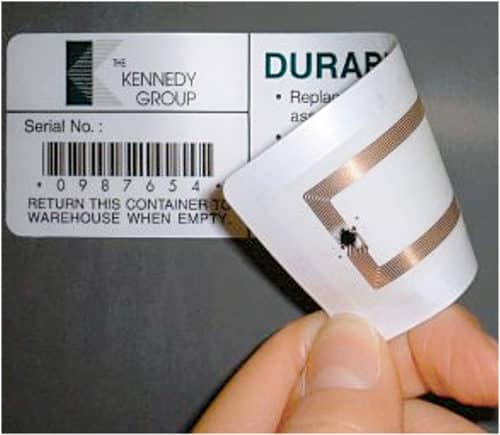
Background
The first experiments with respect to implants were carried out way back in 1998 by Kevin Warwick, a British scientist. These demonstrated how a computer was able to wirelessly track his movements within the university. He also demonstrated its other applications, such as opening doors and switching on lights.
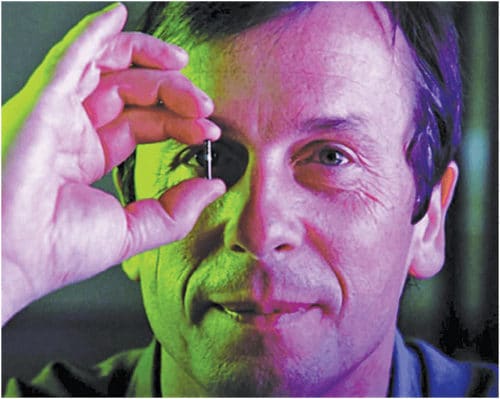
Mark Gasson, another British scientist, implanted an advanced glass capsule RFID device surgically into his left hand, in 2009. Later, he demonstrated how the implanted microchip can be perceived as being a part of the human body, showing that separation between man and machine can become theoretical. He also demonstrated how a computer virus wirelessly infected his implant and then got transmitted on to other systems.
Later, Amal Graafstra, an amateur biohacker, successfully used implants to access his home, open car doors and log on to his computer. He built a smart gun that could fire only after reading his implant.
Martijn Wismeijer, who was working as marketing manager for Bitcoin ATM manufacturer General Bytes, placed RFID chips in both his hands to store his private Bitcoin keys and business card.
Marcel Varallo inserted an NXP chip into his hand. He used it to open secure elevators and doors at work, print from secure printers, unlock his cellphone and home, and store his digital business card for transfer to cellphones enabled with near field communication (NFC) to make payments.
Technology behind human implant devices and apps
Recent developments in technology have made possible new potential applications for RFID devices implanted in the human body. These can now be used for remote identification of persons, remotely controlling human biological functions, transmitting measurements of chemical or biological data inside the body, and monitoring biological activity or physiological functions of humans.

A classic example is VeriChip tag, which contains a numerical code as identifier, readable from a distance of 10cm or less using a handheld reader.
When illuminated by a low-frequency magnetic field (134kHz) generated by the reader, the tag powers up and transmits a unique 16-digit code, which can be used for identifying individuals remotely. The technology is not yet fully developed for real-time tracking of people using an implanted microchip. To be able to track anywhere on Earth, a GPS-controlled device would be required for this application. This would mean dimensions that are too large for implanting inside a human body.
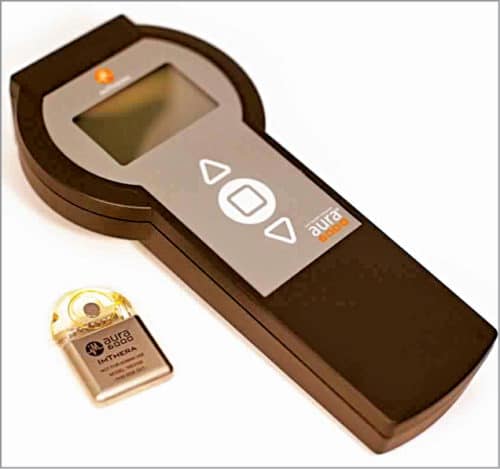
Miniaturisation of such a device for building a rice-grain-sized GPS implant is a challenging technological issue that is yet to be solved. The current technology for human implants is based on battery-less (passive) devices, which allow achieving very short read range, typically 10cm or less.
Consequently, these implants cannot communicate with GPS satellites (or other equivalent satellite-based positioning systems) required for real-time tracking of people. Sub-micron-sized implants connected to GPS is not feasible using the technology available today.
Remote control of human biological functions
A single chip radio system with onboard antenna and sensors of size 100µm×100µm×1µm is what is feasible with current technology. Consequently, wireless communication becomes possible with human implants for receiving information about chemical or physical quantity in biological systems, or for providing remote activation/deactivation of biochemical activity inside a single living cell.
Using nanotechnology, fabrication of an FM radio using a single nano-tube of 1µm length and 10nm width is possible. The nano-tube radio is inserted inside the living human cell to give a sub-cellular remote and real-time controlled interface.
Miniaturisation of the radio chip could also be used in the fabrication of smart dusts, that is, tiny objects with sensing and communication abilities that may be massively distributed over an area for remote tracking of human presence. Another application could be based on the fabrication of tiny physiological sensors implanted in humans, communicating with a single central unit in wireless body area networks (WBANs).
Technical requirements for human implant devices
There are several technical requirements that must be fulfilled by a human implantable device having sensing, computing and communication abilities.
In-vivo implants need to be as small as possible. It is impractical for an electronic device injected into the body to have a battery for supplying power. The large size of a battery compromises its utilisation, and a passive (also called battery-less or fully-autonomous) device may be preferred in practice.
Another requirement concerns the selectivity of the remote control of human biological functions. For example, remote control of a specific bio-molecular event inside a living cell has to be spatially-localised for other biological activities to remain unaffected in the cell.
Bio-compatible material, hence, is required to be used for fabricating the implant device and its packaging, to avoid tissue reactions. The remote electronic control at, say, bio-molecular scale should not alter bio-molecular events occurring in the surrounding medium, leaving surrounding molecules relatively unaffected.
Technological feasibility of tiny devices implanted inside a living cell for the remote control of a wide range of biological functions or detection of presence of an antibody has been successfully demonstrated by scientists. They have done so by implanting a nano-robot in embedded smart sensors in the human body for tele-operated surgical procedures or early disease diagnosis.
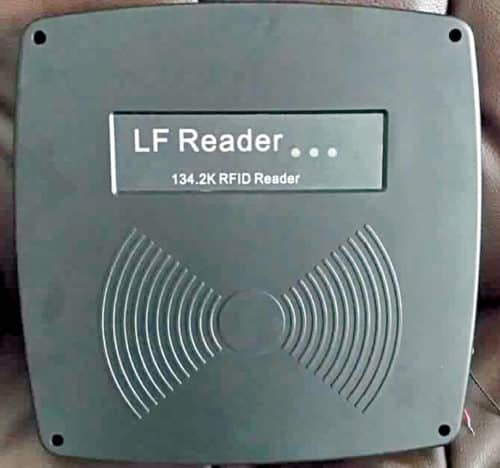
Undesirable migration of the device inside the body needs to be controlled. Secure and reliable wireless transmission of personal or confidential data recorded by the device inside the body needs to be established.

Total confidentiality and high reliability are important criteria to implement such wireless devices. For safety to antennae implanted in human tissue, electromagnetic energy radiated or re-radiated by an implant device for wirelessly communicating with the outside world must conform to IEEE human tissue exposure standards, namely, IEEE 1999 and IEEE 2002.
Communication technology for human implant devices
These devices use communication through electromagnetic waves to exchange data between an interrogator (also called reader) and transponder for identification and tracking purposes. The transponder generally consists of an IC for storing and processing data signals, and an antenna for receiving and transmitting signals.
The device can be fabricated at bio-molecular scale that interrogates its local chemical environment (sensing) and/or controls the biological machinery inside a single living cell. Remote monitoring at such a small scale provides the selectivity requirement, that is, local control of bio-molecular machinery without damaging cells or affecting biological events in the surrounding medium.
The technology allows real-time remote monitoring of fully-autonomous implants in the human body. Read range of communication for these implants is about 10cm. Such short-read range is advantageous for meeting security or confidentiality requirements.
Passive technology overcomes the limitations of lifetime, reliability and size of implant devices that require a battery. Electromagnetic field received from the interrogator is the source for supplying power to the passive transponder.
Two techniques used for wirelessly supplying the required power to read data from the passive RFID chip are inductive coupling and electromagnetic coupling. In inductive coupling, a time-harmonic magnetic field is generated by the low-frequency current in the interrogator coil. In the near-field region, inductive coupling may occur between this coil and the transponder coil.
Electromagnetic coupling uses electromagnetic waves that propagate from the antenna in the far-field region to power the passive implant chip.
Frequency and read range
An ultra-high-frequency (UHF) device offers significantly higher bandwidth than a low-frequency (LF) or HF device, allowing high data rates and incorporation of privacy/integrity-preserving cryptographic protocols to protect information. Using UHF electromagnetic waves, a high level of miniaturisation of the chip (including antenna) can be achieved.
However, UHF waves may be problematic for human implants as UHF and microwave fields are strongly attenuated by water (which is the primary constituent of human tissue).
Consequently, a passive solution allows a very limited communication range (typically shorter than 1m). UHF field transmitted by an interrogator located outside the human body is subject to multiple reflections by environmental objects creating interferences and undesirable shadow zones in which the implanted chip becomes non-detectable by the interrogator.
HFs (in particular, 2.45GHz) may be unsafe for humans for long-term exposure. The resulting range for wireless communication with a UHF implant may then be greatly dependent on the implant’s location in the human body. Inductive coupling operating in HF (13.56MHz and below) is one of the most common methods to wirelessly send power and data from an off-body interrogator to a device implanted inside the human body.
Biomedical/therapeutic applications of human implant devices
For biomedical applications, human implant devices transmit various chemical or biological parameters measured inside the body. For example, when used on diabetic patients, a wireless alarm unit is implanted in the abdominal region of the patients to continually read the data of a sensor chip sensitive to glucose concentration of surrounding fluids and transmit the data when required.

For therapeutic applications, human implant devices monitor biological activities or physiological functions of the human body and modify them.
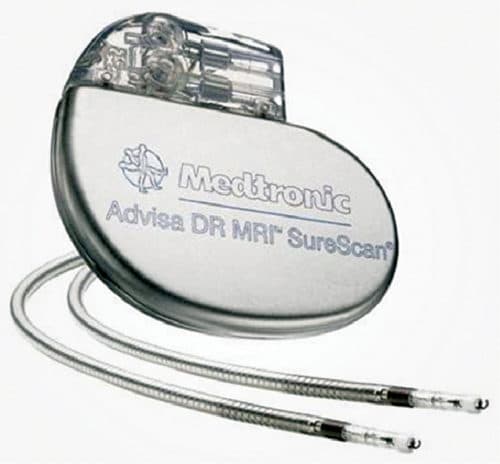
Benefits of using microchip implants
The microchip implant can become a very useful tool, especially in emergency situations where instant access to the right medical information can mean the difference between life and death. Here are the various advantages of using implants.
Easy accessibility to medical history
Implanted microchips are useful for patients, particularly those suffering from diabetes, cardiovascular disease or Alzheimer’s disease.
The implanted microchip can be used in medical emergencies, especially when a patient is unconscious, to quickly gain access to his/her medical history, such as antibiotics taken in the past, allergies, medication regularly taken and other information that is relevant. The microchip itself need not contain the patient’s entire medical history, but rather a unique code that can be used to access the information from a database.
Easy identification
Passports, driver’s licences and so on, which are often used for identification purposes, are increasingly containing microchips. For example, passengers can be identified at an airport by scanning the microchip in their passports. It would require minimal changes in infrastructures at airports, and train and bus stations, to transit from scanned passports to scanned implanted chips. People would be identified easily just by walking past a reader.
Institutional memberships and access control
Implanted microchips are convenient and practical to use in workplaces, hotels, gyms and anywhere else where identification is needed to grant access and make payments.
Baja Beach Clubs in Rotterdam, Netherlands and Spain use implanted microchips for members, to avoid long waiting time in lines and for easy access to membership features and facilities. Members can keep track of what they have ordered. The computer automatically debits their bank account by scanning the chips, thus making the process of making payment convenient and easy.
Easy tracking of persons
This is useful for keeping tabs on persons such as patients, children and criminals. For example, it is possible for babies to get mixed up at hospitals, for children to get lost in a crowd, run away from home or be kidnapped, for the elderly or hospital patients to wander out of care facilities, or for criminals to escape from prisons. In such instances, it is vital to be able to track people to provide peace of mind to millions of caregivers, family members, parents and relevant authorities. An implanted microchip would make it significantly easier to track people within the critical time available.
No worry about losing cards
Cards are frequently used for many daily activities, such as making payments, taking public transport, gaining access to buildings or borrowing books from the library. The problem with these plastic cards is that these are easy to lose or can get stolen. With an implanted microchip there is no such fear, as it is impossible to lose or steal.
Ability to automatically control many devices
An implanted microchip brings a digital identity into the real world by providing the ability to automatically control a large number of devices and equipment. Imagine being able to start your car automatically, open the front door of your house as you approach it, switch on your favourite TV channel as you sit down on the couch, or even adjust the air-conditioner temperature.
Allowing only the registered owner to use a weapon
Many firearms dealers, such as Smith & Wesson and Browning, have developed an implant system for firearms that allows only the registered owner to fire his or her weapon. This effectively avoids dangerous situations in which a stolen weapon ends up in the wrong hands, or a weapon accidentally falls in the hands of children.
Potential problems and security risks
Some potential problems that come with microchip implants are given below.
Possible health risks
Implanted microchips do not always stay in place and may migrate to a different location, making them hard to find. This may become problematic in medical emergencies.
Some other risks include electrical hazards, adverse tissue reactions, infections, non-compatibility with medical equipment, such as MRI machines, and electro-surgical and electromagnetic interference with devices, such as defibrillators.
Privacy and consent-related issues.
Council on Ethical and Judicial Affairs (CEJA) of American Medical Association published a report in 2007 alleging that RFID implanted microchips may compromise privacy, because there is no assurance that information contained in the microchips can be properly protected.
Concerns were raised regarding the potential abuse of microchips. Their adoption by governments as a compulsory identification program could lead to erosion of civil liberties, as well as identity theft if the devices are hacked.
Concerns were expressed that, for people with dementia, who could possibly benefit the most, obtaining informed consent is most difficult.
While implants could make lives easier, more comfortable and efficient, it would simultaneously become very easy for governments and surveillance agencies to continuously track us.
Microchips may reduce freedom of choice
Implanting microchips may become mandatory for citizens for, say, to apply for a job, getting insurance, be admitted to school, get due benefits and concessions from governments, etc. This could mean that citizens are compelled to pay with microchip implants, too.
This raises certain questions. Will it become mandatory to link the microchip implant for opening a bank account or buying a SIM card for a phone? How will people remove the implant? To provide improved and better public service, service provider(s) may insist on all their employees getting microchip implants. And all these aspects can severely limit the freedom of choice.
Chips could get hacked or corrupted
Since microchip implants contain considerable amount of important personal information, these can become the prime target for people with criminal intentions, such as hackers, kidnappers and the like. Imagine the information on the chip being not only readable but also writable. That would mean data could be corrupted, wiped or copied. Criminals could use the data and copy or replace it with their own data, altering your—and their—physical identity.
As is the case with most new technological developments, implanted microchips are also sensitive to exploitation.
Closing thoughts
The future of micro-chipping in humans is exciting, with the likelihood of many interesting potential applications becoming commonplace in the near future. Applications include animal tracking, product tracking, inventory control, access and passport control, and so on. New developments in technology have opened up new expectations in the fabrication of tiny devices, which could be implanted in the human body for locating and tracking persons, or for remotely controlling human biological functions.

A microchip implanted inside the human body can transmit its data to an off-body interrogator at a short distance (typically 10cm or less). It cannot communicate with GPS satellites or other equivalent satellite-based positioning systems. However, a remote and reversible control of human bio-molecular machinery is now within reach using existing technology.

While the thought of having a chip injected into the body is a little strange, it really is no stranger than other implanted devices used today, such as pacemakers. Today, micro-chipping is purely voluntary and mainly used for high-risk patients, such as diabetics and people suffering from Alzheimer’s and cardiovascular diseases. It may soon become necessary to implant more than just one microchip to accommodate many different digital identification systems and different cards being used.
If human micro-chipping is not done in a mandatory manner, and not used for tracking or frisking, then people generally seem quite open to potential applications. Mass implantation of these chips will, however, need to undergo many debates about health and privacy issues. Points such as how the technology is being utilised by humans, where it is being applied and for what purpose require a commensurate ethical response from the broader community.
For instance, what does it mean for technology to be embedded beneath the skin in a perfectly-healthy human being for the purposes of easy identification or even amplification? Is an implant for non-medical purposes a basic breach of human rights? Are implant IDs, even if consented, in direct conflict with a state’s privacy laws? And what happens if an implant cannot be removed on demand because it has become intertwined with tissues in the body? Will we still have control over our body’s privacy? Will we be able to remove the implant(s) ourselves? How will we know if our chips are being hacked? Hence, several questions need to be answered in the journey, before we see high proliferation of implants in our day-to-day life.
Deepak Halan is associate professor at School of Management Sciences, Apeejay Stya University







My name is Roddell Thomas. I am a resident in Mexico, MO where I have recently had an implant placed inside of my involuntarily. I now am under RNM and am experiencing voice to skull (V2K)? Somehow through this implant they know are able to track and monitor me 24/7. I believe it to somehow be connected to the satellite/drone that sits out side my home every night and follows me wherever I go. This monitoring includes but not limited to my heart rate, my bodily functions, even whether I’m aroused, or get chills up my arm. They know when I have to use the restroom, etc. They can see everything I do and have had me under surveillance for the last 5 months. How do I know this? Because I hear them clearly and even have captured a few recording using an app called Ear Scout. But it seems hard for others to hear because of the frequency level. Every part of my life has been invade and I have no privacy. I just want it to stop. They are even able to register my thoughts and turn them into words. They are also able to mimick my voice as they plan to release a fabricated conversation on facebook if I continue to talk about what is happening to me. I believe they are using an app similiar to Lyrebird or Baidu. I dont know what to do or where to turn. They have made demands for me to move out of Mexico, which is my hometown. I am a single parent father and do not deserve this daily harassment and ridicule that I am receiving. If anyone out there knows who I can contact to better help me please reach out to me at your earliest convenience.
Please help me i have microchip implanted in me by my brother can aomeonw help me what device can use to detect the chip in me
Dear Nadia,
While the type and make of the chip implanted is not mentioned by you, please note that the chip can only be detected by an expert, who will be able to advise the device to be used to detect the chip in you.
Or just a regular K-18 RFID scanner would work too
Dear Mr Thomas,
From the information provided it appears that for the last 5 months you have an implant placed inside you involuntarily, you are under RNM and experiencing V2K. (V2K is usually used by the government agencies as a mind control technology to transmit sounds and thoughts into the heads of individuals suffering from auditory hallucinations, delusional disorders, or other mental illnesses). You fear that you are being tracked and monitored 24×7 for biological functions and health parameters. You are looking for any person to help you to stop this.
I am based in India and am not aware of the rules, regulations and laws that exist there. Perhaps it would be best for you to take advice from a reputed medical specialist and/or legal expert in Mexico.